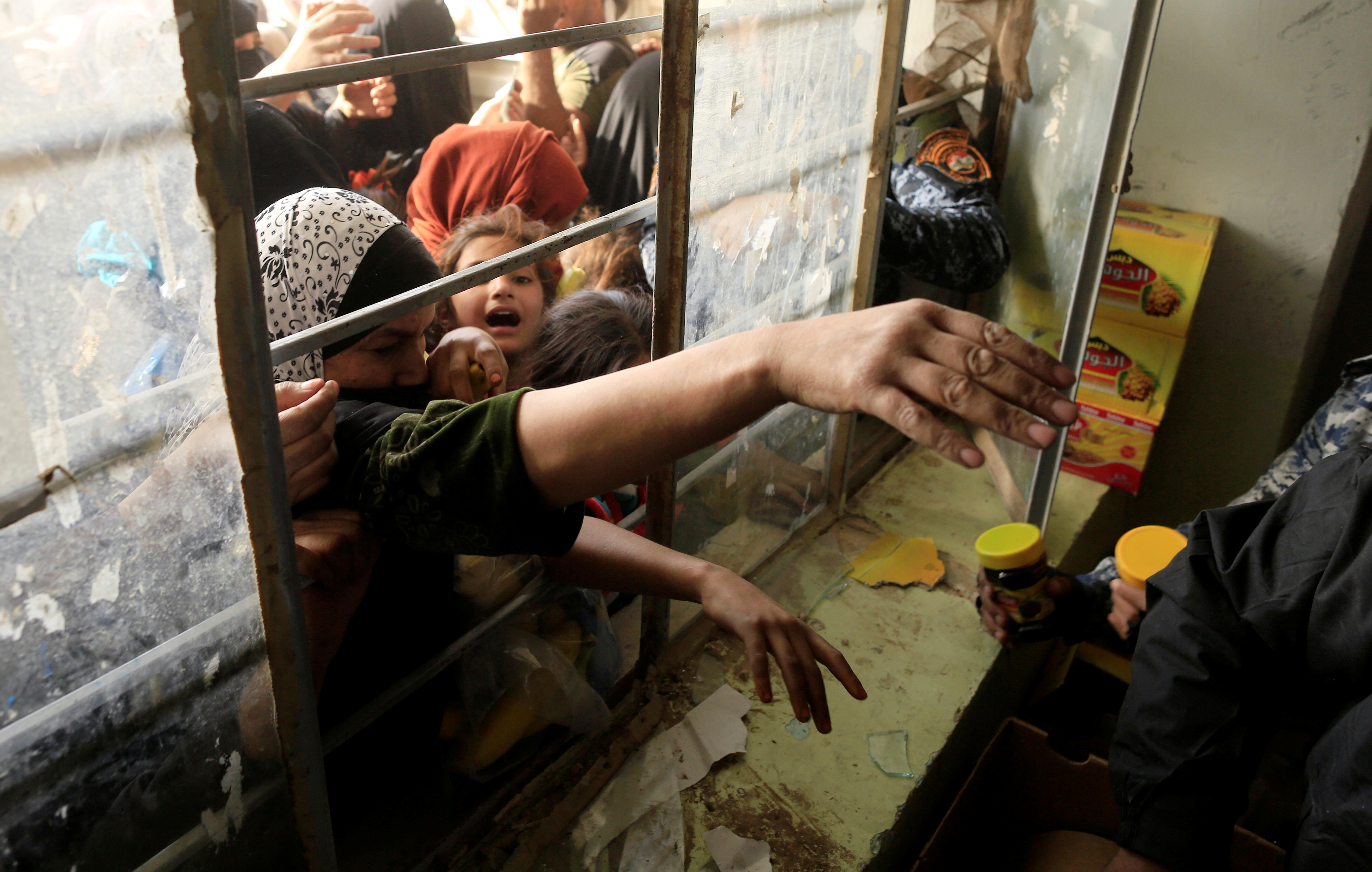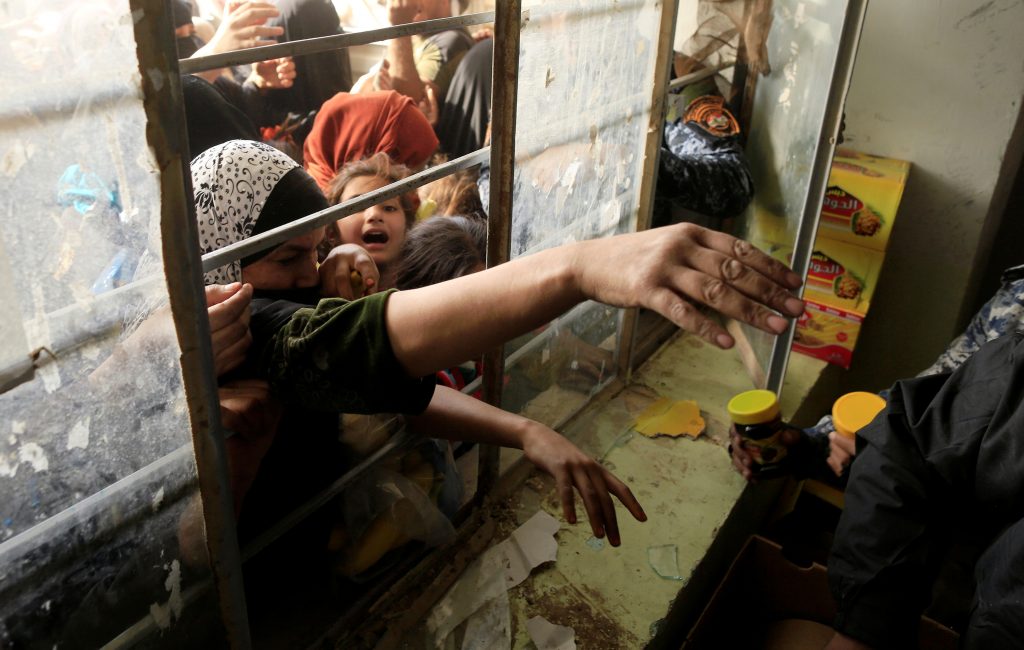 In late September, the Iraqi parliament voted to dismiss Finance Minister Hoshyar Zebari over corruption allegations. Zebari had led Iraq’s efforts to secure aid to manage its economic crisis, and most recently, successfully negotiated an International Monetary Fund (IMF) loan for Iraq. A day after the vote, the IMF reaffirmed its commitment to work with the Iraqi government to implement the agreed upon loan. This loan is expected to assist Iraq through its current economic crisis and lay the groundwork for overdue economic reforms.
In late September, the Iraqi parliament voted to dismiss Finance Minister Hoshyar Zebari over corruption allegations. Zebari had led Iraq’s efforts to secure aid to manage its economic crisis, and most recently, successfully negotiated an International Monetary Fund (IMF) loan for Iraq. A day after the vote, the IMF reaffirmed its commitment to work with the Iraqi government to implement the agreed upon loan. This loan is expected to assist Iraq through its current economic crisis and lay the groundwork for overdue economic reforms.
Double Shocks
In the Iraqi government’s Letter of Intent to the IMF, Zebari and Ali al-Allaq, the acting governor of the Central Bank of Iraq, justified the country’s need for financial aid due to the ISIS insurgency and low oil prices. With ISIS taking over large swathes of territory in northern Iraq in June 2014, Iraq’s mission to restore its territorial integrity has cost an estimated $300 billion. This has diverted funds away from growth producing economic activities and in 2015 alone, Iraq’s non-oil sector contracted by 19 percent. In addition to the costs of war, Iraq has been hit with a massive humanitarian crisis. Four million Iraqis are now displaced and Iraq has also taken in 250,000 Syrian refugees. With the operation to retake Mosul underway, the UNHCR estimates the number of displaced could increase by at least 1 million.
In addition to the ISIS insurgency, world oil prices fell in 2014 by 50 percent, putting financial strain on the Iraqi economy. Oil revenue is Iraq’s main source of income making up 90 percent of government revenue. While Iraq’s oil sector did grow by 13 percent in 2015, and by another 20 percent in the first five months of 2016, it also means Iraq is more reliant on oil revenue. If this trend continues, Iraq will only be more vulnerable to oil price shocks in the future.
According to the World Bank, the combination of these shocks has hurt growth, diverted resources away from investment, and increased poverty and unemployment. Economic growth contracted by 2.4 percent in 2014 and is estimated to have expanded by only 0.5 percent in 2015, while GDP per capita decreased by around $5,000. As a result, poverty levels increased to 22.5 percent, with an estimated 2.8 million living below the poverty line by end-2014.
Iraq’s budget deficit has also increased over the past few years, rising from $16.7 billion in 2013 to $20 billion in 2016. The Iraqi government has turned to external borrowing to finance the gap. In 2015, the IMF approved $1.24 billion in emergency financial assistance under the Rapid Financing Instrument to address the 2016 budget deficit caused by the ISIS insurgency and falling oil prices. Facing a similar situation Iraq has again turned to external borrowing to help finance the deficit in 2017. In its agreement, the IMF suggests that Iraq’s deficit can be reduced from 14 percent of GDP to 1 percent by 2021.
IMF Stand-By Arrangement
In July, the IMF approved a three-year Stand-By Arrangement (SBA) for Iraq for $5.34 billion. According to the IMF, the loan will support the government’s economic reform and debt sustainability initiatives, building on what it describes as the success of the Staff-Monitored Program (SMP) that began in November 2015. Since the SMP’s approval, Iraq achieved three of five target objectives including meeting required levels of assets and reserves for the Central Bank of Iraq and maintaining a non-oil income above the required floor. Iraq also managed to meet all three structural benchmarks by completing a survey of domestic debts on non-oil investment spending, compiling a list of all spending of the central government, and appointing an external auditor to audit state-owned banks 2014 financial statements according to international standards.
The loan approval allows for the immediate disbursement of an initial $634 million. The remaining funds will be disbursed contingent on certain performance criteria consistent with the program’s objectives to reform Iraq’s financial and economic policy. The IMF outlined a number of objectives it seeks to achieve with this program including improving Iraq’s foreign exchange policy. The government will do so by maintaining the Iraqi dinar’s peg to the US dollar to ensure economic stability. The Iraqi government will also remove restrictions on currency exchange. This will be an important part of encouraging investment in the country as it will signal that currency can be freely exchanged without government restrictions, which creates a more favorable business environment for investors. It also seeks to strengthen the anti-money laundering and combating of financing of terrorism (AML-CFT) framework to prevent currency speculation, or the buying and selling of currency for a profit. Currency speculation can have serious consequences on Iraq’s currency as it can devalue or inflate the value of its currency.
The IMF seeks to strengthen public financial management to improve the quality of public spending and debt management. The government will do so by implementing a number of measures, including improving reporting of government finance statistics; surveying, auditing, and paying domestic debts; and continue to compile information on government spending. Iraq will also work with the World Bank on designing and implementing an integrated financial management system (IFIMS) to manage spending, payment processing, budgeting, and reporting for the government.
This program will also seek to reduce the dominance of state-owned banks in order to avoid financial sector risks and preserve the sector’s stability. Three of Iraq’s state-owned banks account for 90 percent of the banking system’s assets, which is problematic given their weak financial health. The government will commit to auditing these banks to determine how they will be restructured to improve performance. The Central Bank of Iraq will also implement reform measures to enhance the stability of the banking sector, including strengthening banking supervision, compiling and publishing financial stability indicators, and penalizing banks and non-banks financial institutions for any non-compliance with laws and regulations.
While this program stresses the importance of reducing government debt, it also stresses the protection of social spending which should safeguard the interest of the poor, refugees, and displaced. This will include spending on health, education, assistance subsidies to Syrian refugees and the internally displaced, and the social safety net. The government is expected to commit to maintaining a floor of social spending throughout the duration of the IMF loan.
Reactions
While this loan comes at a critical time in Iraq’s economic crisis, some Iraqi politicians and economists are voicing fears over Iraq’s decision to take on this debt. They are concerned that the loan could do more harm than good in the long run as it will turn into a set of unrealistic conditions and demands on the Iraqi economy, in addition to spurring more government corruption. In the past, Iraq failed to follow through with reforms required by the IMF including conditions of a 2004 economic reform package requiring privatization of some sectors and raising fuel prices in exchange for reducing and rescheduling $50 billion worth of debt.
Iraqi Member of Parliament, Noura al-Bajari, expressed concern over the country’s growing debt in general and its inability to pay them off. Some economists suggest Iraq owes $69 billion in foreign debts, but it is difficult to determine the enormity of Iraq’s debt given the lack of official statistics on the size of the debt. According to Abdul Rahman al-Mashhadani, an Iraqi economics professor, these debts were used mainly for consumption rather than investment, which he says makes it harder to pay them off.
Sali Mahdy is an intern with the Rafik Hariri Center for the Middle East.
Image: Women try to grab food supplies through a window at a school used as a food distribution point in Hammam Al-Alil, Iraq, November 13, 2016. (Zohra Bensemra/Reuters)
